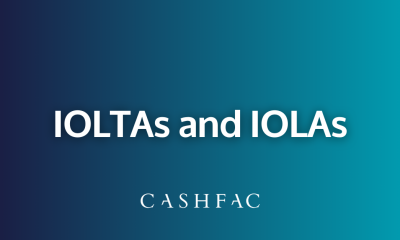Cash management continues to be a prevalent topic in treasury and GTNews spoke to Alastair McGill, managing director of global business at bank-to-corporate cash management solutions provider Cashfac about challenges with treasury technology and the wider treasury space today.
How has Cashfac helped treasurers manage cash better?
We focus on helping firms manage their operational cash: the management of transactions, accounts and balances – all of which has become unrecognisably complex with cross-border expansion and multi-bank relationships. The knock-on effect is an explosion in the volume of payment transactions that businesses now need to manage. Coupled with this, regulation is more invasive while service level and supply agreements are increasingly tight around the control of transactions, requiring more traceability and faster action. The dynamic nature of managing operational cash processes means that firms must have the ability to continuously reconcile monetary flows with the treasurer being able to understand the intraday dynamic cash position of the firm. He or she must be able to readily change the forecast cash position of the organisation as granular events that impact the business happen. They must have the ability to reconcile the wider, longer-term cash flow forecast with the nearer term events on the ground. Did what we expect actually happen at the transaction level; did it happen yesterday, or is it still outstanding; do I need to change my forecast and my management of balances? It’s these type of areas we help treasurers with.
What are the biggest challenges that companies ask you for help with?
Treasury professionals are all too frequently constrained by the lack of real-time visibility across their entire organisation, particularly when it comes to multi-currency and multi-jurisdictional cash flows. In a recent survey, The EMEA Operational Cash Index carried out by East & Partners, we discovered 90% of firms lack a 360 degree view of their operational cash.
Companies turn to Cashfac to achieve this 360 degree view of cash. For firms to do this they must have continuously reconciled intraday visibility across four main stages of cash management:
- Actual historical cash position: including bank balance reports and recalculated opening balances
- Real time cash position: including unconfirmed payments, confirmed funds received and real balances
- Intraday cash position: including payment authorisation, transactions cleared and transactions queued
- Forecast cash position: including projected sweeps, projected balances, limit control and emerging balances
How has the relationship between banks and corporates changed since 2008?
The EMEA Operational Cash Index carried out by East & Partners highlighted two distinct areas that have changed since the GFC. One is that multi-bank relationships are a reality and in Europe this can mean managing large number of banking relationships. In the companies surveyed for the Index, the median number of relationships held was over 11. So, winning the lion’s share of the business and becoming the dominant or lead bank has definitely become harder. Secondly, the expectation level of corporates has increased. The Index undoubtedly showed that transaction banks frequently fail to demonstrate a deep understanding of their customer’s business. Many corporates are looking for the understanding of their business to be visible, not just in terms of the individuals which manage their relationship, but in the systems and data that the bank provides them with.
What are Cashfac’s views on TMS systems?
TMS solutions are great at helping firms answer questions like: “Have I got the capital I need to support the business”, “Am I making the best use of my capital?”, “Am I measuring & controlling counterparty exposure?” or “Am I delivering shareholder value from my spare cash? But they don’t provide the complete picture. There are often challenges they leave unanswered and that require a more granular approach; such as determining the evolving free cash position throughout the day, or reconciling cash flow forecasting with actual positions. Equally, TMS systems don’t automatically provide the insight required to support an organisation’s supply chains working capital management requirements. Neither do they guarantee to keep all the company’s operations within bank limits throughout the day. There are also times when firms want to identify late payers faster and take action, so they need complementing by data that resides in both the corporate’s ERP systems and within their bank. This is the ‘gap’ that Cashfac focuses on.
Do you see more of a future for ERP systems in comparison to Excel spreadsheets?
Excel has become an invaluable business tool that all companies, including Cashfac, utilise widely for specific tasks. However, it’s well documented that it’s not a reliable tool for automating processes, especially when processes need to adapt or when they rely on manual intervention. The combination of the perceived risks of Excel and the availability of new low cost ERP solutions such as Xero or MYOB, I believe the future is definitely with ERP. However, Excel’s far from dead as there’ll always be the need for applications like Cashfac and ERP solutions to be able to export to Excel for offline analysis.
How do you see the cash management landscape evolving?
Innovation and investment in cash management technologies has been slight over the last few technology refresh cycles; possibly the result of low interest rates and surplus cash. Meanwhile we’ve seen significant disruption in the payments arena, good examples of which would be Bitcoin or ApplePay. Unfortunately, improving payment technologies without matching the equivalent levels of investment in controlling operational cash fails to help corporates and SME’s maximise the value of the cash in their business. So looking forward, I see a requirement for cash management applications which help corporates better manage their cash, provide a more complete, 360 degree view of their cash and better control their receipts and payments processes. Also, the channel for these applications in many cases will be the banks. Banks are the nucleus of any cash management operation, and the obvious participants to bring a better way of working to their clients. By providing flexible tools and processes which allow corporates to improve transparency of cash within their internal structures, across their multi-bank relationships, throughout their supplier relationships, there’s a chance to win significant loyalty.


